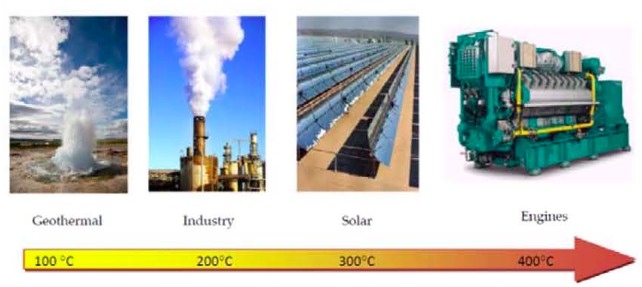Carbon Dioxide Puts Waste Heat to Work
NEWS
Yang Chen’s PhD research shows the promise of carbon dioxide as a working medium for turning low-grade waste heat into power to drive electric turbines, refrigerators and heat pumps.

It doesn’t take an advanced scientific degree to understand that a good deal of the energy consumed by vehicles, appliances and industry goes to waste when it’s carried away by a cooling system. The problem with this waste heat is simple: it’s usually not hot enough to do any useful work. A general rule, well known to energy system planners, is that the lower the heat source temperature, the harder it is to achieve high efficiency.
But researcher Yang Chen, who recently received his PhD in Energy Technology from the KTH School of Engineering and Management, sees opportunities in putting the unique characteristics of carbon dioxide to use in efficient, low-cost and environmentally benign systems for recovering waste heat.
“With rising energy costs and concerns about climate change, there’s a lot of interest in finding ways to make better use of low-grade waste heat,” Yang explains. Other researchers are investigating conventional organic working fluids, which are heated to become a saturated vapour that drives an expansion machine — the process at work in most refrigeration systems. “CFC refrigerants that harm the ozone layer have mostly been phased out in recent years, but their replacements are powerful greenhouse gasses and they simply aren’t very efficient at low temperatures,” Yang says.
Yang and his fellow KTH researchers are looking at using carbon dioxide to power electrical turbines or refrigeration compressors directly, exploiting the unusual physical behaviour of CO2 in its “supercritical” state.
Carbon dioxide is an ordinary gas at standard temperature and pressure, and becomes solid dry ice when frozen. But if temperature and pressure are increased above a certain critical point, CO2 adopts properties midway between a gas and a liquid. When it’s in this supercritical range, temperature and pressure are no longer linked to one another; carbon dioxide in this special state is able to act both as the transport fluid carrying heat away from a source and as an expansion gas performing the actual work of turning a turbine or driving a refrigeration compressor.
“Carbon dioxide has a low ‘critical point,’ of only about 31 degrees C,” Yang says. “Our research involves looking at how to use this physical property in low-temperature heat source and waste heat recovery applications.”

Yang says engineers at the Swedish heavy vehicle manufacturer Scania are interested in the possibility of capturing exhaust heat from diesel engines on trucks and using it to power ob-board refrigerators or freezers. In this application, replacing the extra drive belt for a conventional electric generator to run the compressors could add up to significant fuel savings.
And industrial processes like aluminium smelting generate huge amounts of waste heat that could be put to better use. “With carbon dioxide as the working fluid, there’s still residual heat in the fluid after the work is done,” Yang says. “That means we could be producing power from industrial waste heat and still be able to export warm water for residential space heating.”
Having reached the proof of concept phase, Yang’s group is now looking at how to get prices low enough with mass production to bring the return-on-investment period to five years or less. “That’s a pretty attractive proposition for a truck manufacturer designing vehicles to run year-round for ten to fifteen years,” he says.
A good sign for the future of the field is the level of interest in calculating how long it takes to earn back investment costs through energy savings. “When we began this research in 2004, these calculations only existed for systems like nuclear plants that operate at very high temperatures, but there’s been a lot of scientific literature on low-temperature applications published just in the last few years,” Yang says.
“The first paper that I saw published in this field was from 2006, where a researcher looking at solar applications of CO2 as a transport medium. But at least 20 papers have been published in the last two years.”
By Kevin Billinghurst | kb2@kth.se